Ellen Frank | |
|---|---|
 Ellen Frank in 1938 | |
| Born | 9 March 1904 |
| Died | 17 September 1999 (aged 95) |
| Occupation | Actress |
| Years active | 1930-1992 (film) |
Ellen Frank (1904–1999) was a German film and television actress. [1]
Ellen Frank | |
|---|---|
 Ellen Frank in 1938 | |
| Born | 9 March 1904 |
| Died | 17 September 1999 (aged 95) |
| Occupation | Actress |
| Years active | 1930-1992 (film) |
Ellen Frank (1904–1999) was a German film and television actress. [1]
Frank was the daughter of a Prussian government councilor, Georg Frank, and his wife Paula (née Heckmann). She grew up in Cologne, and, from 1911, in Hanover, where she attended a secondary school for girls. She received training at a commercial school and at an engineering firm. She then worked as a secretary at a concert agency. She lost her father in 1921 and her mother in 1922.
Frank took dance lessons and appeared as a dancer at the Hanover City Theater. In 1924 she danced at the Dreistädtebundtheater Hamborn/Gladbeck/Oberhausen, then in Duisburg. She received acting lessons at Erwin Piscator's acting school and made her debut as Amalia in Die Räuber at the Volksbühne Berlin. She played in various theaters in Berlin, including the cabaret Die Katakombe, and occasionally in Würzburg and Dresden and was very active as a singer and cabaret artist.
From 1933 onwards, Frank starred in German films. In several productions, including repeatedly with Heinz Rühmann, she embodied self-confident young women. After her marriage in 1939, she withdrew from the public eye for a long time. In the 1950s, Frank was seen again in a few films. In 1954 she appeared in two Schongerfilm fairy tale productions. In Little Red Riding Hood she played the grandmother and in Hansel and Gretel she was the mother.
From 1956 to 1958 she was engaged at the Munich Theater on Brienner Straße, and from 1959 to 1963 at the Staatstheater Berlin. In addition to several tours and guest appearances, she played at the Munich Kammerspiele from 1985 to 1988 and again from 1990 to 1993.
Her work on television ultimately became very important. She appeared in several series and was part of the regular cast of Matt in 13 Trains and Two Münchner in Hamburg.
In early 30’s she was dating artist Laszlo Moholy-Nagy, living with him in Berlin. In 1931 they visited Finland, meeting Moholy-Nagy’s friend, architect Alvar Aalto. In 1939, Frank married Georg Arm, who worked in the construction industry. Their daughter, Evelyne, became a costume designer and married the set designer Matthias Kralj. Her marriage to Arm later ended in divorce.
Her sister, Ilse, married Walter Gropius.
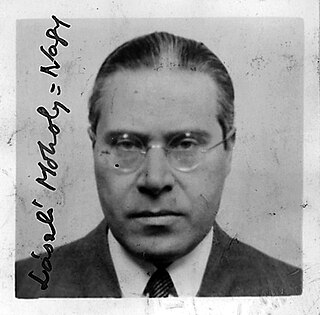
László Moholy-Nagy was a Hungarian painter and photographer as well as a professor in the Bauhaus school. He was highly influenced by constructivism and a strong advocate of the integration of technology and industry into the arts. The art critic Peter Schjeldahl called him "relentlessly experimental" because of his pioneering work in painting, drawing, photography, collage, sculpture, film, theater, and writing.

Hansel and Gretel is an opera by nineteenth-century composer Engelbert Humperdinck, who described it as a Märchenoper. The libretto was written by Humperdinck's sister, Adelheid Wette, based on the Grimm brothers' fairy tale of the same name. It is much admired for its folk music-inspired themes, one of the most famous being the "Abendsegen" from act 2.

Grimm's Fairy Tale Classics, also known as Grimm Masterpiece Theater in the original version and The Grimm's Fairy Tales, is a Japanese anime anthology series by Nippon Animation based on the Grimms' Fairy Tales.

Joseph Kosma was a Hungarian composer who emigrated to France.

Grethe Weiser was a German actress.
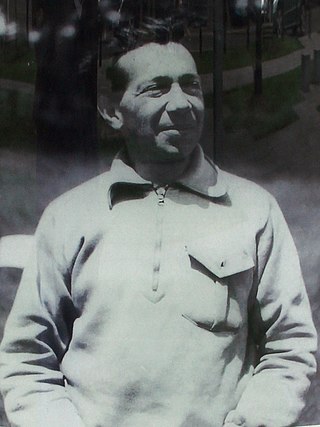
Friedrich Hollaender was a German film composer and author.
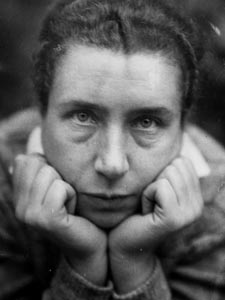
Lucia Moholy was a photographer and publications editor. Her photos documented the architecture and products of the Bauhaus, and introduced their ideas to a post-World War II audience. However, Moholy was seldom credited for her work, which was often attributed to her husband László Moholy-Nagy or to Walter Gropius.

Sibyl Moholy-Nagy was an architectural and art historian. Originally a German citizen, she accompanied her second husband, the Hungarian Bauhaus artist László Moholy-Nagy, in his move to the United States. She was the author of a study of his work, Moholy-Nagy: Experiment in Totality, plus several other books on architectural history.

Valeska Gert was a German dancer, pantomime, cabaret artist, actress and pioneering performance artist.

Fern Andra, Dowager Baroness von Weichs was an American actress, film director, script writer, and producer. Next to Henny Porten and Asta Nielsen, she was one of the most popular and well-known actresses in German silent film.

Franz Allers was an Austrian and American conductor of ballet, opera, Broadway musicals, film scores, and symphony orchestras.
Morag McLaren is a Scottish singer, director and coach who now focuses on helping young singers at the early stages in their professional careers.
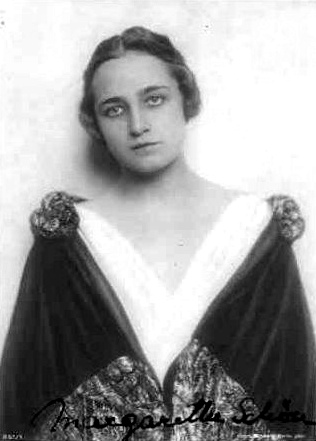
Margarete Schön was a German stage and film actress whose career spanned nearly fifty years. She is internationally recognized for her role as Kriemhild in director Fritz Lang's Die Nibelungen series of two silent fantasy films, Die Nibelungen: Siegfried and Nibelungen: Kriemhild's Revenge.
Anna Christina Maria "Christl" Mardayn was an Austrian actress/singer.
Hilde von Stolz was an Austrian-German actress.
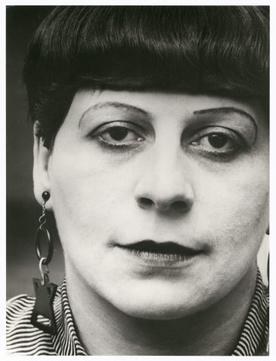
Florence Henri was a surrealist artist; primarily focusing her practice on photography and painting, in addition to pianist composition. In her childhood, she traveled throughout Europe, spending portions of her youth in Paris, Vienna, and the Isle of Wight. She studied in Rome, where she would encounter the Futurists, finding inspiration in their movement. From 1910 to 1922, she studied piano in Berlin, under the instruction of Egon Petri and Ferrucio Busoni. She would find herself landlocked to Berlin during the first World War, supporting herself by composing piano tracks for silent films. She returned to Paris in 1922, to attend the Académie André Lhote, and would attend until the end of 1923. From 1924 to 1925, she would study under painters Fernand Léger and Amédée Ozenfant at the Académie Moderne. Henri's most important artistic training would come from the Bauhaus in Dessau, in 1927, where she studied with masters Josef Albers and László Moholy-Nagy, who would introduce her to the medium of photography. She returned to Paris in 1929 where she started seriously experimenting and working with photography up until 1963. Finally, she would move to Compiègne, where she concentrated her energies on painting until the end of her life in 1982. Her work includes experimental photography, advertising, and portraits, many of which featured other artists of the time.

Fritz Genschow was a German actor, film director and screenwriter.
Rita-Maria Nowotny was a German actress. She was married to Fritz Genschow and appeared in a series of films directed by him in the 1950s which were based on stories by the Brothers Grimm.
Trude Haefelin was a German film and stage actress.
Elisabeth Lindermeier was a German operatic soprano. A member of the Bavarian State Opera, she performed internationally, including at the Royal Opera House in London in the English premiere of Die Liebe der Danae by Richard Strauss. She appeared in recordings and films.